Trending Now
Like it or not, drugs have been a part of your life (and all our lives) for a long time. While the word “drugs” is most often used to denote illegal, psychoactive substances, it actually refers to any substance that has a physiological effect when ingested.
Caffeine is one of the most widely used drugs on the planet, as is the nicotine found in cigarettes. While these are common examples of legal drugs we use every day, we’re going to focus on the drugs that aren’t legal – but are still used pretty commonly.
1. Cannabis/Marijuana
What better place to start our exploration of drugs than cannabis (also known as “marijuana,” “ganja,” or “weed”), since it’s often been touted as a “gateway drug” that leads to the abuse of harder drugs.
While the validity of those claims is a whole can of worms that we’ll leave for another day, it is true that cannabis is one of the most widely-used illegal (in most places and at the federal level) drugs around. A large number of Americans have reported trying it at least once, perhaps because cannabis has fairly mild effects (relative to other drugs on this list, at least).
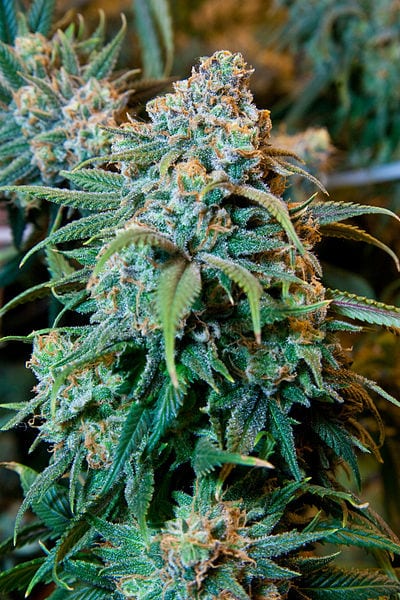
Photo Credit: Wikimedia Commons
Once the primary psychoactive component of cannabis – tetrahydrocannabinol (THC) – enters the body, it binds to cannabinoid receptors in the brain to create a general sense of euphoria, altered perception, and an increased appetite.
Other short-term effects include dry mouth, red eyes, paranoia, and possible impairment of short-term memory. The “high” typically comes on in a few minutes (when smoked) or up to an hour (when eaten) and lasts anywhere from 2-6 hours.
While marijuana is still illegal at the federal level, and listed as a Schedule 1 substance (an illicit drug with no medicinal uses), plenty or research has been done showing that marijuana can indeed be medicinal.
It is also one of the least dangerous drugs on this list – it is not possible to die from a pot overdose, though people do die in impairment-related accidents.

Photo Credit: Wikimedia Commons
It should be noted that these times and effects may vary since dosage, potency, and personal factors like tolerance, height/weight, and genetics all have an effect on someone’s interaction with any of the drugs in this list.
2. Psilocybin
Psilocybin is the active psychedelic substance found in several species of mushrooms colloquially known as “magic mushrooms.”
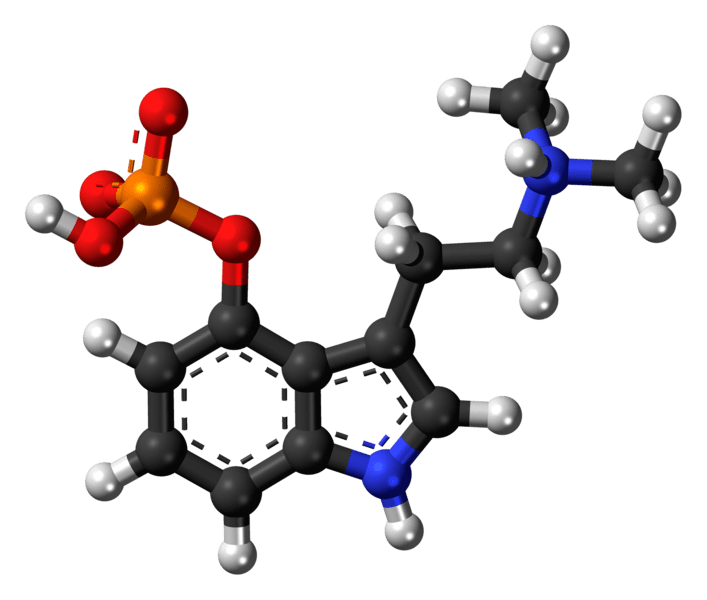
Photo Credit: Wikimedia Commons
Once ingested (as whole mushrooms, or mushroom tea), psilocybin affects the brain’s serotonin receptors.
It’s known for its mind-altering effects, which can range from mild euphoria all the way to visual and mental hallucinations, changes in perception (including one’s sense of time).
These effects are usually fast to come on (generally within an hour or so) and recede back to normal within a day.
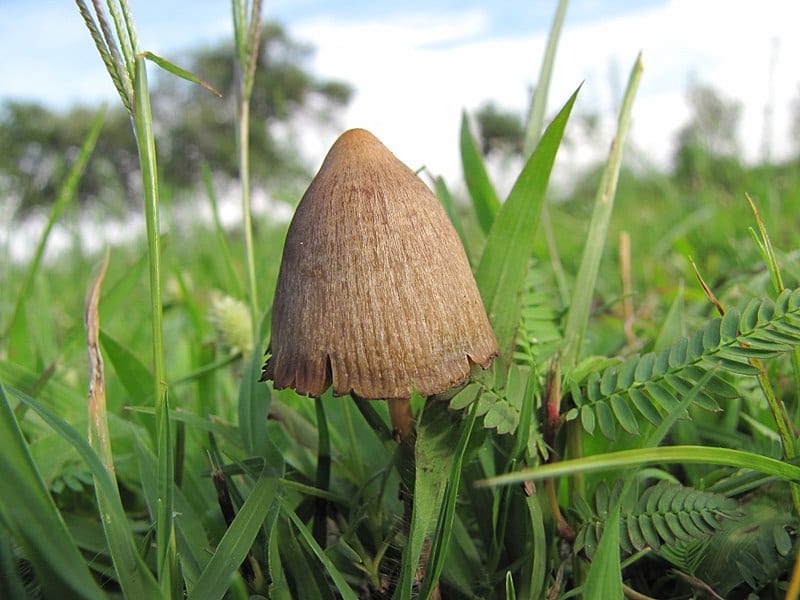
Photo Credit: Wikimedia Commons
Some users have reported having intensely spiritual experiences while on the drug, while others report far less desirable effects like nausea and panic attacks.
These effects tend to vary wildly from one user to another, suggesting that factors such as environment and pre-existing psychological state also have an effect on the “high” along with standard factors like dosage, potency, and personal physiology.
Research has been conducted that shows psilocybin has powerful anti-anxiety and anti-depressant effects in terminally ill patients. Deaths from consuming magic mushrooms are extremely rare.
3. LSD
Lysergic acid diethylamide (LSD), also known as “acid,” is perhaps one of the most well-researched and powerful psychedelics (substances known for affecting serotonin receptors and creating sensory hallucinations) known to man.
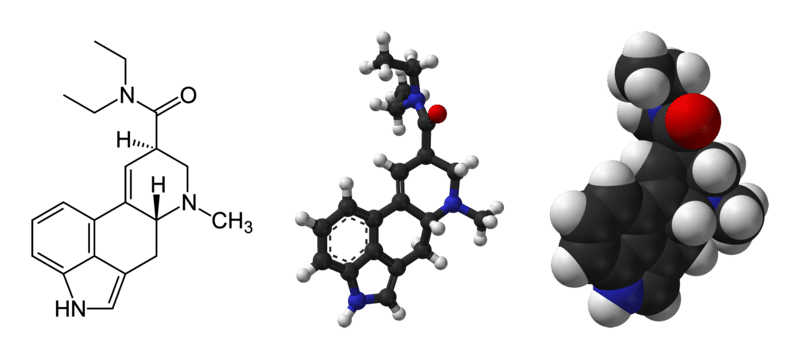
Photo Credit: Wikimedia Commons
LSD is usually found in liquid form, though recreational dosages of the drug are almost always taken orally via blotter paper or sometimes a sugar cube.
It can also be absorbed through the skin. Just a few micrograms can be enough to produce incredibly vivid hallucinations.
LSD is also unique because while most psychedelics tend to affect only serotonin receptors, LSD directly interacts with the dopamine system as well.
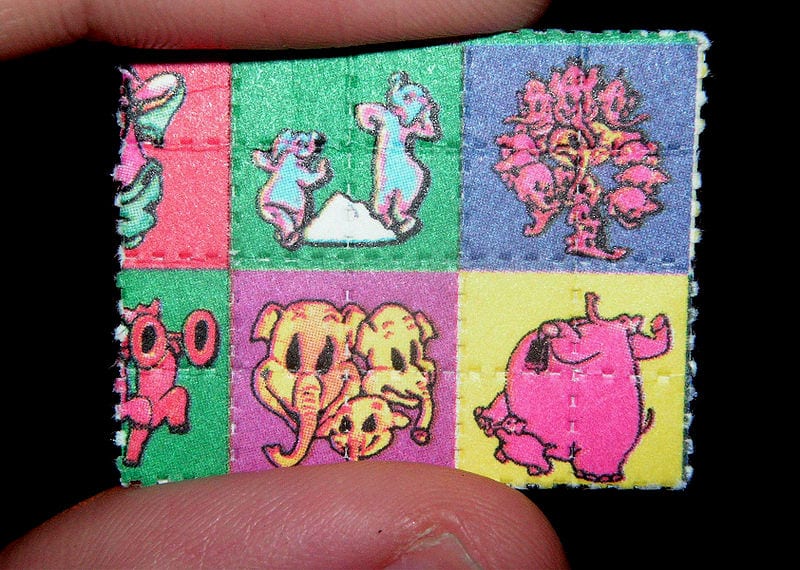
Photo Credit: Wikimedia Commons
Users often report that an LSD experience (colloquially known as a “trip”) lasts for most of a day, altering the perception of time and creating a host of visual effects.
These include movement of inanimate objects/surfaces and enhanced perception of colors and lights.
Others report even more dramatic hallucinations and/or shifts in consciousness that can produce profound, lasting effects on the user.
These may take the form of a spiritual/personal awakening in positive cases or a severe mental breakdown in negative ones. Deaths from LSD are also very rare.
4. DMT/Ayahuasca
Ayahuasca is a brewed beverage originating in the Amazon basin, the recipe of which includes the psychoactive ingredient, Dimethyltryptamine (DMT).
DMT on its own is naturally oxidized by the body with little effect, but other ingredients in ayahuasca allow DMT to unleash its full potential.

Photo Credit: Wikimedia Commons
Ayahuasca has an ancient history among many of the indigenous peoples of South America as a way to communicate with higher wisdom and/or other planes of existence.
It produces a powerful psychedelic experience which lasts several hours. Once ingested, it takes about 30 minutes to start taking effect and lasts for roughly 6 hours.
Ayahuasca produces intense emotional states and audiovisual hallucinations, as well as altering the perception of time.
Many users report being visited by higher beings and spirits, providing deep personal insights and unlocking and healing hidden depths of the psyche.
It is, however, possible to have an adverse experience which could be psychologically stressful/damaging.

Photo Credit: Wikimedia Commons
One important thing to note is the purgative effect ayahuasca has – most trips include plenty of vomiting and possible diarrhea.
This is considered part of the spiritual experience, and can also serve to expel any tropical parasites or worms the user may have ingested.
Again deaths directly attributable to the ingestion of ayahuasca are rare, though there has recently been a rise in unregulated drug tourism to South America that has lead to the deaths of some spiritual seekers.
5. MDMA
More commonly known as ecstasy (E) or Molly, Methylenedioxymethamphetamine (MDMA) is a psychoactive drug that is used primarily for recreation.
The primary difference between E and Molly is that while E is usually found in pill form which requires various additives, Molly is available as a powder – i.e. with fewer/no additives.
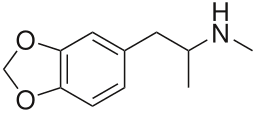
Photo Credit: Wikimedia Commons
When ingested orally, effects begin within an hour and last for a few hours.
MDMA acts as a releasing agent for dopamine, serotonin, and norepinephrine, resulting in a general sense of euphoria, increased self-confidence and feelings of closeness with others, enhanced perceptions and senses (particularly touch), and an altered sense of time.
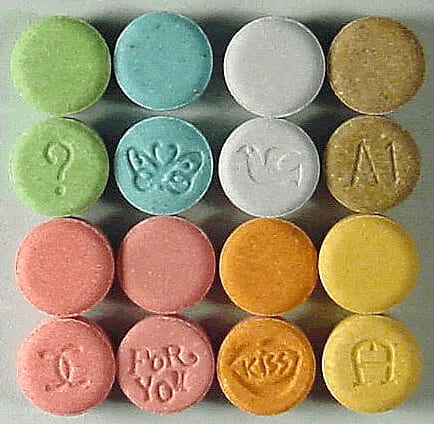
Photo Credit: Wikimedia Commons
Adverse effects include increased heart rate, potential muscle spasms and lockjaw, loss of appetite, and memory impairment.
It is possible to overdose on MDMA, and it does happen. As with many of the other drugs on this list, MDMA’s effects are also dependent on environmental and psychological factors.
6. Cocaine
Cocaine is a strong stimulant that is commonly used as a recreational drug. Though most commonly snorted, it can also be injected or smoked.
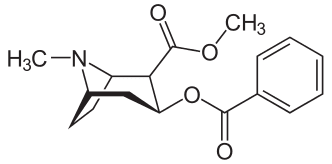
Photo Credit: Wikimedia Commons
The effects of cocaine are almost immediate and tend to last from a few minutes to an hour or two.
Cocaine acts specifically upon the dopamine and reward pathways of the brain, making it incredibly addictive.

Photo Credit: Wikimedia Commons
Users report feeling an intense sense of happiness and confidence, sometimes accompanied by a heightened sense of sexuality.
Physically, it causes elevated heart rate, sweating, and enlarged pupils. In higher doses, it can lead to potentially life-threatening heart problems and increase in blood pressure.
In 2016, over 10,000 overdose deaths nationally were attributed to cocaine.
7. Heroin
Heroin is a powerful, highly addictive opioid that is usually injected intravenously, though it can also be smoked or snorted.
Like cocaine, the onset of its effects is fairly quick, although it does last a few hours.
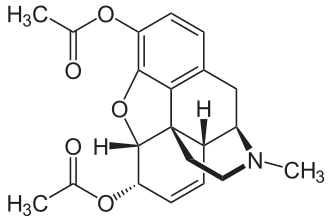
Photo Credit: Wikimedia Commons
When injected into the bloodstream, it binds to opioid receptors in the brain to create a powerful sense of calm and euphoria, as well as an altered perception of time.
It can quickly become intensely habit-forming, however, requiring ever-increasing amounts to get the same “high.”
Heroine can be habit forming with as little as one use.
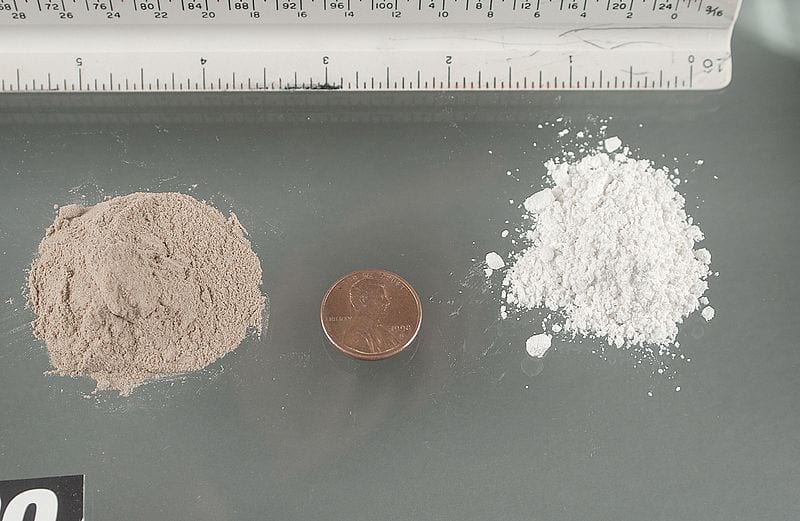
Photo Credit: Wikimedia Commons
Long-term use also leads to collapsed veins, respiratory depression (shallow breathing), decreased liver function, and dependence.
The oxygen deprivation due to slowed breathing is usually also one of the primary causes of death in many heroin overdoses.
Heroin users are also at a much higher risk of contracting HIV, as they often reuse and share needles. In 2016, over 16,000 people died overdosing on heroin.
8. Methamphetamine
Methamphetamine, more commonly known as meth, crystal, or speed, is a powerful stimulant that is generally smoked in its crystallized form.
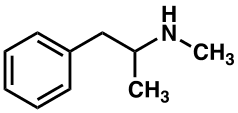
Photo Credit: Wikimedia Commons
Inhaled in this way, meth acts within a few hours and lasts for up to a day.
It creates a powerful sense of euphoria in users, as well as increased energy, loss of appetite, and heightened sexuality.
Continued use leads to deterioration of the skin and teeth, unhealthy changes in blood pressure, and twitching.

Photo Credit: Wikimedia Commons
Meth is highly addictive, creating a dependency within a relatively short period of time (as little as one ingestion) by affecting the brain’s reward pathways. Chronic users also tend to start engaging in unsafe sexual practices, leading to a higher risk of contracting a sexually transmitted disease. Meth has a lower overdose potential than heroin and cocaine (and other opioids), but it is still an extremely dangerous drug – in 2015, there were 4,900 reported meth overdoses.

Photo Credit: Wikimedia Commons
A little history
It’s interesting to note that all of these drugs were, at one time or another, originally used by the medical community.
Meth was a popular weight-loss aid, heroin was used to help with morphine addiction, cocaine was used as a general anesthetic (it sometimes still is used for anesthetic purposes), and LSD, MDMA, DMT, and cannabis have all been used for therapeutic and spiritual purposes.
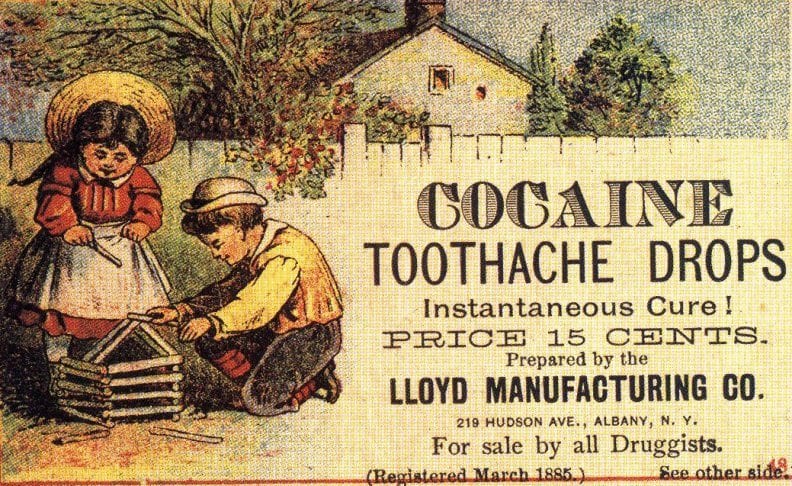
Photo Credit: Wikimedia Commons
While there are some valid public health and safety reasons for many of these drugs to be classified as illegal (and some less valid and more fear-mongering reasons as well), there are those who would argue that altering one’s mental state is a deeply personal choice that shouldn’t be directed by any government. We can’t pretend to know which side of that debate is right, but as always, we encourage you to examine the facts for yourself and make your own choices based on the best information available.
Any way you slice it, please stay safe out there. Regardless of what you put in your body, none of it is worth your life or your happiness.
Thanks, fam!






